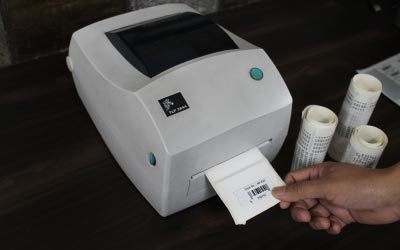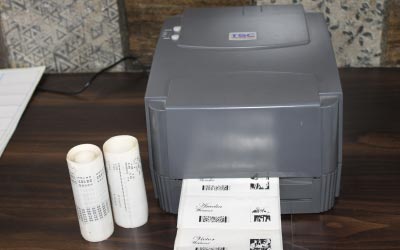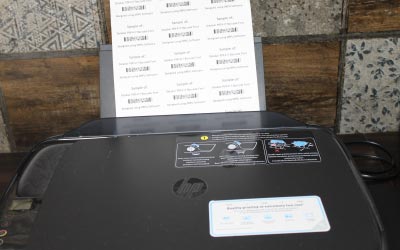Postnet barcode allows postal information to be quickly and accurately sorted by machines. When a piece of mail is processed, the barcode reader can quickly scan the barcode and determine the correct ZIP code and other relevant information. This allows mail to be sorted and delivered much more quickly than if it had to be sorted by hand.
These traditional barcode scanning devices, newer technologies such as RFID (radio-frequency identification) and NFC (near-field communication) are also capable of reading Postnet barcodes. These technologies use wireless signals to communicate with the barcode, allowing for contactless scanning and tracking of items. Postnet barcode is primarily used by the USPS for mail sorting and delivery, it can also be used by other organizations that require a way to encode ZIP codes for mailing purposes. However, its use is limited to the United States, as it is designed specifically for the USPS ZIP code system.
By: Digital Deeper
Published: 13/05/2023
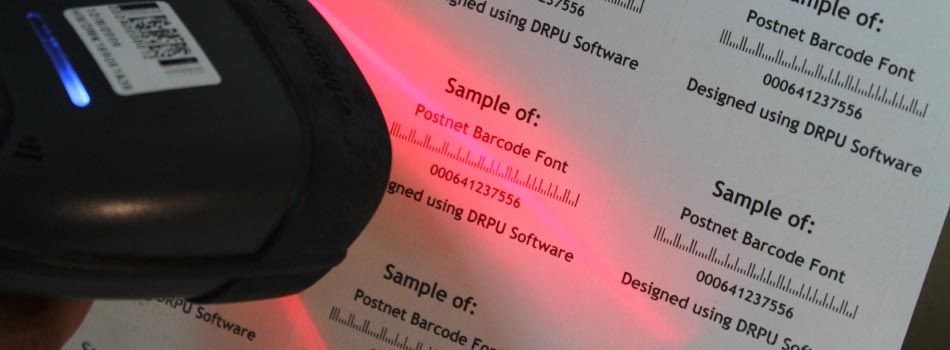
Types Of Devices that can Read Postnet Barcode System
Postnet barcode can be read by a variety of barcode scanning devices including handheld scanners, fixed-mount scanners, and mobile devices such as smartphones and tablets. These devices use optical scanners to read the barcode, which captures the pattern of bars and spaces and converts it into a digital signal that can be decoded by the scanning software.
01Handheld scanners
The Handheld scanners are the most common type of barcode scanning device and are typically used in warehousing and retail environment. These scanners can read Postnet barcodes from a distance and can be used to scan multiple items quickly and efficiently.
02 Fixed-mount scanners
Fixed-mount scanners typically used in manufacturing,distribution environments, where items moving conveyor belt. Scanners are mounted above the conveyor and use sensors to detect when an item is passing underneath. Scanner then reads barcode and sends data to a computer.
03 Mobile devices
Mobile devices such as smartphones and tablets can also be used to read barcodes. These devices use their built-in cameras to capture image, which is then processed by barcode scanning software installed on the device, allows easy and convenient barcode scanning without need for additional hardware.
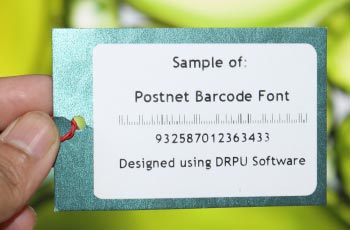
Postnet barcode is primarily used in the United States for mail delivery purposes by the United States Postal Service (USPS). The Postnet barcode is a type of barcode that is commonly used in the United States Postal Service (USPS) to encode zip codes and other routing information for mail processing. It is a 5-digit barcode that is made up of vertical bars of varying lengths, with each digit represented by a different pattern of bars. The Postnet barcode has been in use since the early 1980s and is still used today, although it has largely been replaced by newer barcoding systems. Therefore, it is not commonly used internationally.
🞛 However, some countries have similar barcode systems for postal mail delivery, such as Canada Post's Postal Code Bar Code (CPCBC) and Royal Mail's Postal Alpha Numeric Encoding Technique (PLANET) in the United Kingdom. These systems are similar in concept to Postnet, but may have different barcode structures and encoding methods.
🞛 It is important to note that Postnet is a fixed-length barcode, meaning it can only encode ZIP codes that have 5, 9, or 11 digits. This limitation may not be suitable for countries with longer or shorter postal codes.
In summary, while Postnet is not commonly used internationally, similar barcode systems may be used in other countries for postal mail delivery purposes.
The cost of implementing a Postnet barcode can vary depending on a number of factors, including the size and complexity of the mailing operation, the equipment and software needed to create and print the barcodes, and any training or support required to use the system effectively. In this article, we will explore some of these factors and provide an overview of the costs involved in implementing a Postnet barcode system.
One of the primary costs associated with implementing a Postnet barcode system is the cost of the equipment and software needed to create and print the barcodes. This can include barcode printers, label-making software, and other hardware and software components. Barcode printers can range in price from a few hundred dollars for a basic model to several thousand dollars for a high-end industrial printer. The cost of label-making software can also vary depending on the features and functionality of the program, with prices ranging from a few hundred dollars to several thousand dollars. Other hardware and software components that may be needed include a computer or server to run the label-making software, barcode scanners for verifying the accuracy of the barcodes, and any additional software or middleware required to integrate the barcode system with other systems or applications. Overall, the cost of equipment and software for a Postnet barcode system can range from a few thousand dollars to tens of thousands of dollars depending on the size and complexity of the operation..
Another factor to consider when implementing a Postnet barcode system is the cost of training and support for the system. This can include training for employees who will be using the system, as well as ongoing support and maintenance to ensure that the system continues to function properly. Training costs can vary depending on the complexity of the system and the number of employees who need to be trained. Basic training for a small operation may only require a few hours of instruction, while more complex systems may require multiple days or even weeks of training. Support and maintenance costs can also vary depending on the size and complexity of the operation. Basic support may include phone or email support from the vendor, while more comprehensive support packages may include on-site support, regular maintenance visits, and upgrades to the software and hardware. Overall, the cost of training and support for a Postnet barcode system can range from a few hundred dollars to tens of thousands of dollars depending on the size and complexity of the operation.
Finally, there are a number of implementation costs associated with implementing a Postnet barcode system. These can include the cost of designing and testing the barcode labels, the cost of integrating the barcode system with other systems or applications, and the cost of any necessary infrastructure upgrades, such as adding new network connections or upgrading servers or workstations. Design and testing costs can vary depending on the complexity of the labels and the number of iterations required to achieve a final design. Integration costs can also vary depending on the number and complexity of the systems or applications that need to be integrated. Infrastructure upgrade costs can be particularly significant for smaller operations that may not have the necessary infrastructure in place to support a barcode system. Upgrading hardware and software can be expensive, but failing to do so can result in a system that is slow, unreliable, or unable to handle the volume of data required for barcode labeling.
Postnet barcode offers several advantages that make it a popular choice for many applications. Here are some of the advantages of using Postnet barcode:
-
1High
Accuracy
Postnet barcode offers high accuracy in terms of data capture and processing. This makes it an ideal choice for applications where accurate data capture is essential.
-
2Easy to Read
Postnet barcode is very easy to read, even from a distance. This makes it a popular choice for applications where scanning from a distance is required. Postnet barcode offers a high level of security, as it can be used to encode confidential information, such as customer addresses and credit card numbers.
-
3Speed and Security
Postnet barcode can be read quickly, which makes it a great choice for applications where speed is important.
-
4Cost-Effective and
Error-Free
Postnet barcode is a cost-effective solution for many applications, as it can be printed using standard inkjet or laser printers.Postnet barcode eliminates the possibility of human error in data entry, as the data is captured and processed automatically by the barcode scanner.
-
5Compatibility and
Versatility
Postnet barcode is compatible with most modern barcode scanners and readers, making it easy to integrate into existing systems. Postnet barcode can be used for a wide range of applications, including package tracking, inventory management, and document management.
Overall, Postnet barcode is a reliable and cost-effective solution for many applications. Its high accuracy, speed, and ease of use make it an ideal choice for businesses and organizations of all sizes.
